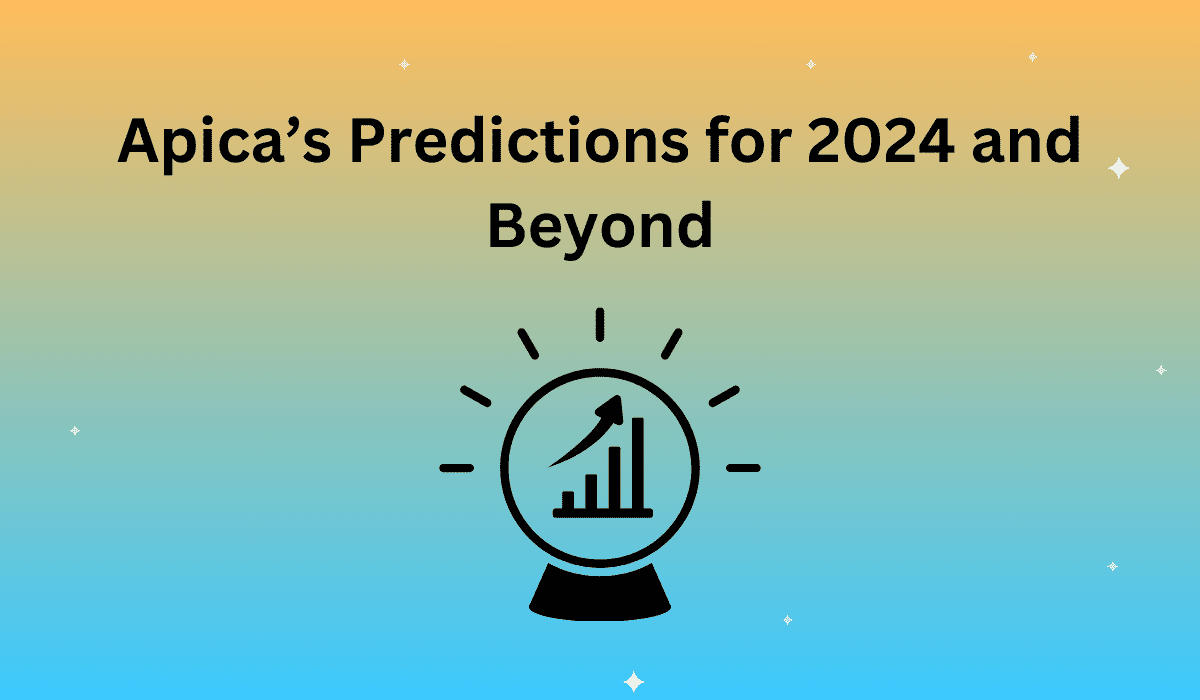In a world where the only constant is change, the onset of 2024 brings with it a slew of technological advancements and challenges.
Predicting the trends of tomorrow is not easy, especially in a tech-dynamic era as of today. However, we can assume the following would be likely by observing the progress and recession in certain areas.
In this article, we’ll explore the key aspects of technological progress and challenges within the Data landscape in the coming years.
The Resource Challenge
We will see increasing energy costs next year, making everything more expensive. These rising costs will further push us towards green energy, motivating the energy sector to evolve and encouraging citizens to evolve.
A part of that evolution will be the increasing popularity of electric vehicles, which will be an excellent thing for the environment but a stressor on the power grid. Some refer to electric vehicles as ‘cell phones on wheels,’ which means even more data must be managed.
It is said that electric vehicles could generate up to 10 exabytes of data per month, leading to significant ramifications for policymakers, manufacturers, and infrastructure in general, as this will be more data than we’ve ever had to manage before.
The Rise of GenAI in Data Management and Observability
GenAI, or Generative AI, is set to revolutionize how we manage and observe data. In 2024, AI will continue to boom, and we will see adaptations in almost every area of our lives.
By 2024, GenAI algorithms will have matured, enabling more sophisticated data interpretation and decision-making processes.
This evolution will empower businesses to navigate the complexities of data management with unprecedented ease and precision.
While it will undoubtedly make our lives easier in many ways, we will see an uptick in error rates because this technology is only as smart as the language it’s been trained in.
That said, AI will inevitably replace more people and jobs, but the good news is that it will also create more jobs. In a few years, we will see many IoT devices generating huge volumes of high-cardinality data. With AI, the possibilities are virtually endless, and we are only now starting to explore them.
Apica is poised to integrate the oncoming advancements with advanced monitoring solutions, offering businesses cost-efficient tools for observability and Application Performance Management (APM).
Observability: A New Era
The field of observability is undergoing a metamorphosis. By 2024, traditional monitoring systems will evolve into more dynamic, AI-driven observability platforms. These systems will not just monitor data; they will anticipate issues and offer solutions proactively.
That being said, as businesses grapple with increasingly complex IT environments, the demand for sophisticated observability tools will skyrocket. Apica is at the forefront of this shift, offering intuitive and comprehensive solutions for businesses to stay ahead of the curve.
Data Growth: More than Just Numbers
The exponential growth of data is a trend that’s here to stay. Experts predict that by 2024, the global data sphere will reach unprecedented levels, driven by IoT devices, user-generated content, and enterprise data. This growth isn’t just quantitative; it’s qualitative. The nature of data is becoming more diverse, requiring advanced strategies for management and analysis.
Virtual Communication
While life has returned to normal post-pandemic, virtual communication is here to stay. We will see technology play an even bigger role in our day-to-day lives, from working remote jobs to regularly visiting doctors via telehealth appointments. New devices and routes will continue to emerge as we determine the best ways to collaborate and interact with people worldwide successfully.
The Emergence of Data Fabric Trends
Data Fabric as an architectural framework will become a cornerstone for businesses dealing with massive data influxes. This approach enables a more integrated and accessible data environment, facilitating better data quality, compliance, and management.
By 2024, IDC expects 75% of large enterprises to adopt Data Fabric as their foundational data management architecture.
Thus, by weaving together disparate data sources, Data Fabric allows businesses to gain a more holistic view of their data landscape.
Looking Ahead
As we peer into the future and beyond, one thing is clear: the realms of Data Management, Observability, Data Growth, and Data Fabric trends are not just surviving; they are thriving. They are evolving to meet the demands of a world where data is the new currency.
Businesses, now more than ever, need to harness these trends to stay competitive. In this journey, platforms like Apica are not just observers; we are enablers, offering the tools and insights needed to navigate these complex waters.
The Question for the Future
At the precipice of 2024, the winds of change are undeniable. Generative AI and augmented reality, Data automation trends are not mere buzzwords; they are the pillars of the future.
Businesses must not remain passive observers; they must actively embrace these trends and leverage them to stay competitive in the data-driven era.
As we stand on the cusp of these exciting technological advancements, one question remains: How will your business adapt and thrive in this new era of data and technology?








